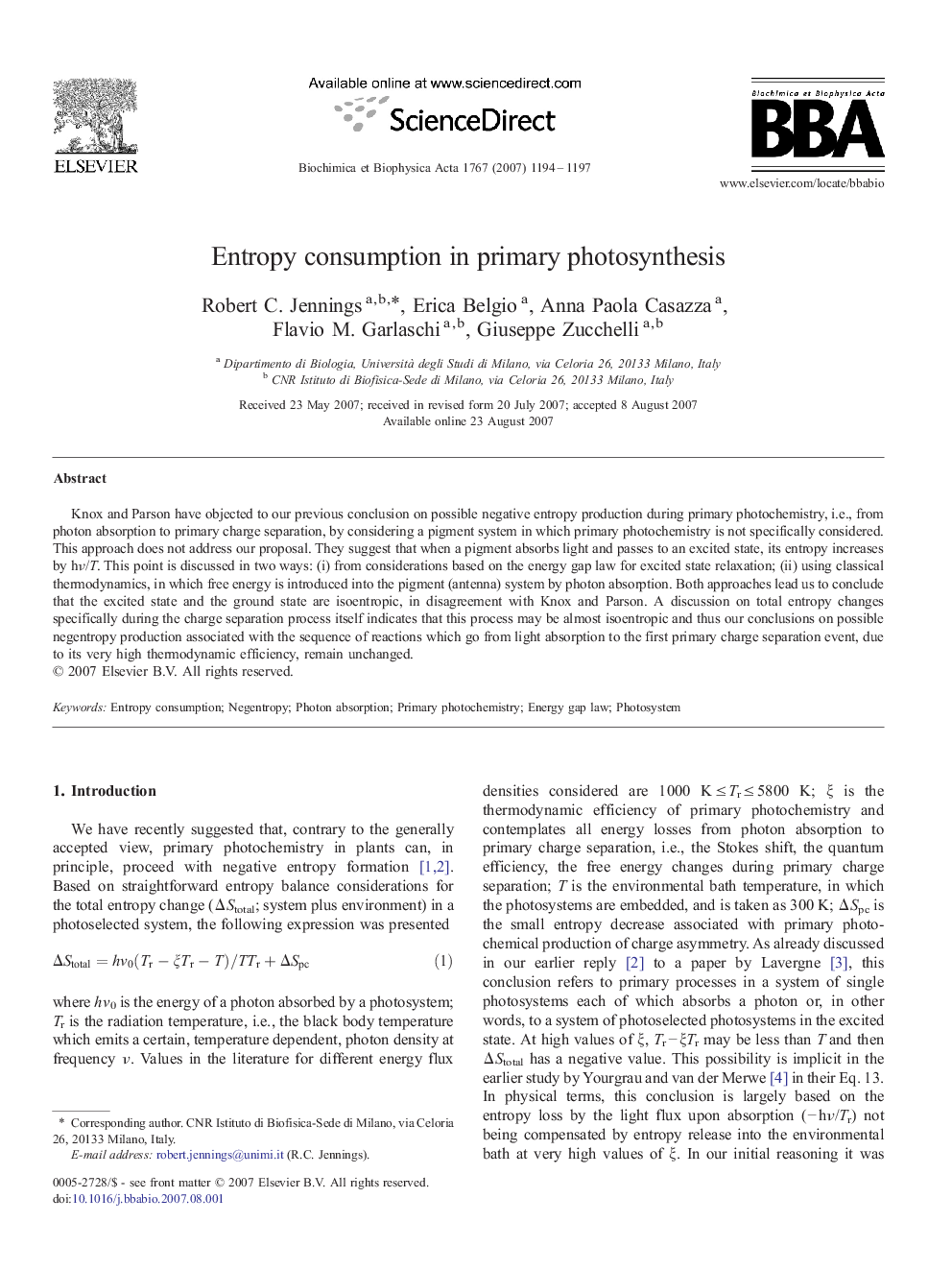| Article ID | Journal | Published Year | Pages | File Type |
|---|---|---|---|---|
| 1943445 | Biochimica et Biophysica Acta (BBA) - Bioenergetics | 2007 | 4 Pages |
Knox and Parson have objected to our previous conclusion on possible negative entropy production during primary photochemistry, i.e., from photon absorption to primary charge separation, by considering a pigment system in which primary photochemistry is not specifically considered. This approach does not address our proposal. They suggest that when a pigment absorbs light and passes to an excited state, its entropy increases by hν/T. This point is discussed in two ways: (i) from considerations based on the energy gap law for excited state relaxation; (ii) using classical thermodynamics, in which free energy is introduced into the pigment (antenna) system by photon absorption. Both approaches lead us to conclude that the excited state and the ground state are isoentropic, in disagreement with Knox and Parson. A discussion on total entropy changes specifically during the charge separation process itself indicates that this process may be almost isoentropic and thus our conclusions on possible negentropy production associated with the sequence of reactions which go from light absorption to the first primary charge separation event, due to its very high thermodynamic efficiency, remain unchanged.
